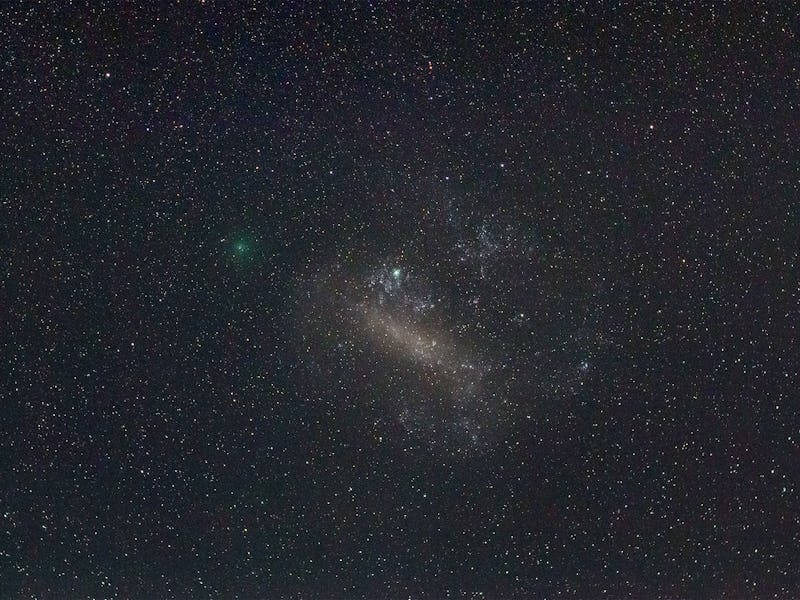Astronomers Identify Rare Flyby Comets Just Two Days Apart
These are close encounters of the ice-and-dust kind.

This week, Earth saw a rare showcase of nearby comet flybys. On Monday morning, Comet 252P/LINEAR zipped by the Earth and grazed us by about 3.3. million miles — making it the fifth-closest comet encounter on record. Not to be outdone, Comet P/2016 BA14 zoomed past Tuesday morning at a mere 2.2 million miles away, making it the closest comet to jet over Earth in 246 years and third-closest overall.
That’s still about 800,000 miles less than Comet Lexell’s flyby back in 1770. But whatever, that was more than 200 hundred years ago — this is an amazing and rare spectacle.
Unfortunately, P/2016 BA14 wasn’t very visible to most people on Earth. Only skywatchers utilizing professional telescopes could see the 375-foot comet zoom by the planet. On the plus side, lucky amateur astronomers may have gotten a chance to watch the bigger, 750-foot Comet 252P/LINEAR buzzing around the previous morning.
Both flybys provide a serendipitous opportunity for scientists to study comets in more depth. Here’s where the plot thickens — there’s some speculation that P/2016 BA14 was actually just a fragment of 252P/LINEAR. This would make sense as their orbits are so similar, and they happen to be passing by Earth around the same time.
“We know comets are relatively fragile things,” Paul Chodas, manager of NASA’s Center of Near-Earth Object Studies said in a news release. “Perhaps during a previous pass through the inner-solar system, or during a distant flyby of Jupiter, a chunk that we now know of as BA14 might have broken off of 252P.”
If this is true, understanding the structure and composition of one would undoubtedly help in identifying what the other is made of as well.
252P/LINEAR was discovered in 2000 by MIT’s Lincoln Near Earth Asteroid Research (LINEAR) survey (hence the name). Researchers at the University of Hawaii’s Pan-STARRS telescope found Comet P/2016 BA14 only a couple of months ago, back in January.
We’ll be posting images and providing updates with more information as they are made available in the next several days.